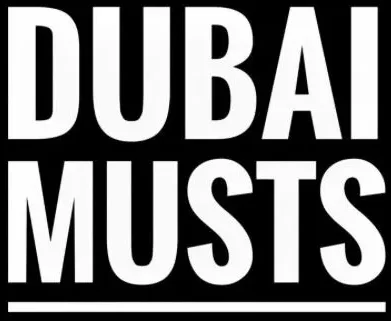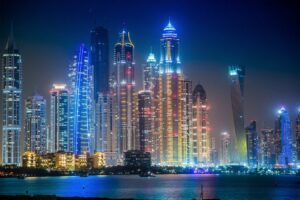The Dubai Metro is one of the most efficient and modern public transport systems in the world. Whether you’re a tourist exploring the city or a resident commuting to work, the Metro offers a fast, clean, and affordable way to get around Dubai.
With air-conditioned stations, clear signage, and connections to major attractions and neighborhoods, it’s the easiest way to travel across the city without the stress of traffic.
Dubai Metro Explained: Your Complete Guide to Getting Around the City
1.Dubai Metro Lines
The Dubai Metro operates two main lines — the Red Line and the Green Line — that make getting around the city fast, reliable, and convenient.
Red Line
The Red Line runs from Rashidiya to Jebel Ali, covering major hubs such as Deira, Al Rigga, Burj Khalifa, Dubai Mall, Business Bay, Dubai Internet City, Al Furjan, and Dubai Investment Park. It also connects to Dubai International Airport (Terminals 1 and 3), making it ideal for both daily commutes and airport transfers. Launched in 2009, it travels north to south and is one of the most used metro lines in the city.
Green Line
The Green Line runs east to west, from Creek Station to the Al Fahidi District, and links with the Red Line at Union and Burjuman stations. Opened in 2011, it stops at key destinations such as Festival City Mall, Oud Metha, Dubai Healthcare City, Al Ras, Etisalat, and Baniyas Square. It serves many older and historic parts of Dubai while offering smooth connections to the rest of the network.
2. Naming of Dubai Metro Stations
Many Dubai Metro station names reflect the areas or landmarks they serve, such as Burj Khalifa/Dubai Mall, Dubai Internet City, or Airport Terminal 1, making it easy to find your way around. Some stations, however, are named after commercial partners as part of Dubai’s station naming rights initiative.
For example, Mashreq Metro Station (formerly Al Barsha) is named after Mashreq Bank, while Sharaf DG Station (formerly Al Fahidi) reflects a partnership with the Sharaf DG electronics brand. This blend of geographic and sponsored names supports Dubai’s modern approach to urban branding while still helping commuters identify key locations across the city.
3. Dubai Metro Timings and Frequency
Planning your trip around the city?
Here’s what you need to know about Dubai Metro operating hours. The Metro runs Monday to Saturday from 5:00 AM to midnight, and until 1:00 AM on Fridays. On Sundays, it starts a bit later, at 8:00 AM.
Red Line Schedule
Monday to Thursday: First train at 5:00 AM, last at 10:44 PM
Friday: First train at 5:00 AM, last at 11:48 PM
Saturday: First train at 5:00 AM, last at 10:44 PM
Sunday: First train at 8:00 AM, last at 10:48 PM
Green Line Schedule
Monday to Thursday: 5:01 AM – 11:23 PM
Friday: 5:01 AM – 12:23 AM (next day)
Saturday: 5:01 AM – 11:23 PM
Sunday: 8:01 AM – 11:23 PM
During peak hours, trains arrive every 3 to 4 minutes, while off-peak times see trains every 5 to 7 minutes. Keep in mind, schedules may shift slightly during public holidays, Ramadan, or major events like National Day and Eid.
If you want the most accurate schedule for your station, it’s best to check the official RTA Journey Planner before heading out.
4. Dubai Metro Tickets and Nol Card Pricing
Dubai’s Metro operates on a cashless ticketing system using Nol Cards, which are also valid on buses, trams, and marine transport. Depending on your travel frequency and preferences, you can choose from several card types:
Red Ticket: Ideal for tourists and occasional riders, this paper-based ticket costs AED 2 and is valid for 90 days. It can be loaded with up to 10 single trips or 5 daily passes.
Silver Card: A popular choice for regular commuters, this card costs AED 25, including a AED 19 balance. It offers access to all public transport modes and is valid for 5 years.
Gold Card: Similar to the Silver Card but provides access to the Gold Class cabins on the Metro and Tram, offering a more luxurious experience at a premium fare. It also costs AED 25, including a AED 19 balance, and is valid for 5 years.
Blue Card (Personalized Card): Designed for students, senior citizens, and people of determination, this card costs AED 70, including a AED 20 balance. It offers discounted fares and can be used across all public transport modes.
Fare Structure:
Dubai is divided into 7 fare zones, and the cost of your journey depends on the number of zones you travel through:
Within 1 Zone:
Red Ticket: AED 4
Silver Card: AED 3
Gold Card: AED 6
Blue Card: AED 1.5
2 Adjacent Zones:
Red Ticket: AED 6
Silver Card: AED 5
Gold Card: AED 10
Blue Card: AED 2.5
More than 2 Zones:
Red Ticket: AED 8.5
Silver Card: AED 7.5
Gold Card: AED 15
Blue Card: AED 3.75
Note: Children under 5 years or below 90 cm in height travel for free.
Important Tips:
Ensure your Nol card has a minimum balance of AED 7.50 before starting your journey.
Fares and policies may change, so it’s advisable to check the official RTA website or use their Journey Planner for the most up-to-date information
5. Dubai Metro: Women’s Section and Basic Rules
Dubai Metro also offers a women-and-children-only cabin, marked clearly with pink signage. While optional, it’s a safe and quiet space many female passengers appreciate, especially during busy hours. Men are strictly not allowed in these cabins, and fines apply for violations.
To keep the system clean and efficient, several rules are in place: no eating or drinking, no switching between Silver and Gold cabins, and luggage must not block aisles or exits. Passengers must also use their own Nol card to board.
Looking ahead, Dubai is expanding its network with new lines like the Blue Line, expected by 2029, connecting areas such as Silicon Oasis and Dubai Creek Harbour.
Dubai Metro keeps the city moving: fast, clean, and on time. With more lines and stations planned, it’s only getting better. Whether you’re heading to work, the airport, or one of Dubai’s top attractions, the metro is a smart choice.
Keep your Nol card ready and enjoy the ride!







